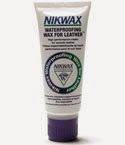如何分辨羽絨
使用羽絨製作出來的產品輕便、舒適、透氣又保暖,不論是做衣服或是棉被都是不錯的選擇。羽絨衣、羽絨外套和羽絨外套更是我們在嚴冬時的依賴。但是如何分辨羽絨的好壞呢?羽絨產品是羽絨(DOWN)混合羽毛(FEATHER),依比例不同區分好壞,如果不仔細研究產品,你買到的羽絨衣或羽絨被可能就是便宜的劣質產品哦!
認識羽絨
一般通稱的羽毛,指可游水而不沾溼的羽毛,主要為鵝毛、鴨毛,歐美日諸國之稱為水鳥羽毛,有別於不會游水,且會沾溼的羽毛,如雞等陸鳥羽毛,所以會有落湯雞之稱。
嚴格說來,羽毛要再細分為羽根和羽絨:
- 羽根為葉狀纖維體,依其生長部位,長短不一,具有適當彈性,抗壓力強,故常做為枕頭的材料。
- 羽絨為球狀纖維體,在羽根下層,緊貼著腹部及翅窩的肌肉生長,只佔全身羽毛的8%,質地輕柔彈性好,是最理想的服飾和棉被材料。
羽絨產品
有的劣質羽絨產品是用合成棉加少許羽絨製成的,這種羽絨產品往往是外層的中間鋪一層羽絨,而內裡的地方鋪合成棉。買時用手裡外仔細摸一摸,如一面摸出一些毛梗,而另一面非常柔軟平滑,就要考慮可能是劣質產品。也可以用雙手分別從內外的同一部位把其中的填充物向同一方向拍打,如果是真羽絨產品,就會因拍趕而使一部分羽絨集中,而另一部分在有陽光的地方一照就會透亮。如果是鋪有合成棉的劣質羽絨產品,就不會出現這種情況。也有的羽絨產品是用未處理過的原毛製成的,這類羽絨產品聞上去有一股腥氣異味,用手一拍還會有塵土飛揚或布料上出現塵汙痕跡,不應選擇。
還有一種用粉碎絨製作的羽絨產品,其含絨量多在50%~70%之間,其他成分則多是細羽絨毛片。這類羽絨產品的手感十分柔軟,摸不到一點毛梗子,掂在手裡的感覺也不像正宗羽絨產品一樣的輕柔,而是比較沉重。用手輕拍時,用粉碎羽絨製成的羽絨產品蓬鬆度差,形如棉絮。所謂羽絨是取自於水鳥(鵝或鴨)胸前羽毛的前端,形狀如蒲公英般鬆軟輕柔,遇熱會更加蓬鬆,而且能像毛細孔般隨溫度變化自然開閉,而羽絨蓬鬆的特性,能隔絕冷空氣,是羽絨衣保暖的關鍵。雖然羽絨衣顧名思義是由羽絨填充製成的,但事實上大部份的羽絨衣還摻雜帶梗的小羽毛,羽絨衣的優劣就取決於羽絨和小羽根的比例,羽絨成份愈高,保暖度就愈好。最高級的羽絨產品可以到100%羽絨。
頂級的羽絨衣、羽絨外套,絕對不能從中作「梗」
 |
| 羽絨放大圖 |
很多人一定都會有這種經驗,羽絨外套才穿沒幾次,竟然會發現到有小羽毛梗從車縫線間插出,穿起來還會刺刺的,經常被插到皮膚。因為對於羽絨衣的知識一知半解,聽信店家信口開河,花大把鈔票買到劣等羽絨產品,也只能自嘆倒楣。要挑一件品質好價格合理的羽絨衣其實不難,首先,要先記住的觀念是「一分錢一分貨」,因為好的羽絨產量不多,而且需要人工揀選,非常費時費工,所以一件頂級羽絨衣至少好幾千元跑不掉。第二,選擇值得信賴的產品來源,與其在夜市選購羽絨外套,不如前往門市店面選購,一方面可以確保產品來源,另一方面如果遇到問題可以回去和店員詢問。第三,選擇通過檢驗的羽絨產品,以台灣產的羽絨為例,通過台灣CAS羽絨驗證的羽絨產品才是經過層層嚴謹的驗證程序把關,亦是MIT優質品質的保證。
專家表示,羽絨產品是羽絨(DOWN)混合羽毛(FEATHER),需靠含有一定比率的羽毛,才會膨鬆、保暖、有彈性,且因羽絨價格高,商業上少有百分之百的純羽絨衣。較差羽絨衣羽絨與羽毛比例是五十比五十,好一點是七十比三十;至於近年流行超輕薄羽絨衣,是百分之九十的羽絨、加入百分之十的羽毛,才能維持輕薄又保暖的功用。且經濟部即將修正「服飾標示基準」,由於羽絨產品不可能百分百由羽絨製成,未來將限制業者只能標示含羽絨比率,禁止再標示「百分百」或「純」羽絨;違者可依商標法,最重開罰新台幣廿萬元。羽絨產品多為衣服、棉被等貼身用品,其品質好壞與否會對健康造成直接影響,一定要謹慎選購。
羽絨衣、羽絨外套的保養方式
 |
| 羅志祥穿著羽絨外套為品牌代言 |
在了解羽絨,並知道如何選購羽絨產品之後,別忘了也要定期保養。很多人認為,所有好衣服都應該送乾洗,其實這是錯誤的觀念。除非產品上有特別標註需要乾洗,否則正常手洗或放入洗衣機清洗即可。將普通的洗劑溶於水後,放入羽絨衣、羽絨外套浸泡約5~10分鐘,再輕輕刷洗衣領、袖口等污漬殘留處,然後以清水沖洗乾淨,最後再放進洗衣袋裡低速脫水即可。如果以洗衣機清洗的話記得要調整至低速清洗,以免傷到羽絨。乾衣時避免直接曝曬於陽光底下。
最後,收藏羽絨衣也不可大意,不論是自然陰乾還是烘乾,把羽絨衣收藏起來之前,一定要確認整件羽絨衣都乾了,再大力搖晃讓羽絨衣蓬鬆,才能收進衣櫃裡收納。
(前往了解
防水外套該如何保養)
Down Feather
 |
饒舌歌手Drake身穿Canada Goose羽絨外套
Drake wearing Canada Goose down jacket |
The down of birds is a layer of fine feathers found under the tougher exterior feathers. Very young birds are clad only in down. Powder down is a specialized type of down found only in a few groups of birds. Down is a fine thermal insulator and padding, used in goods such as jackets, bedding, pillows and sleeping bags. The discovery of feathers trapped in ancient amber suggests that some species of dinosaur may have possessed down-like feathers.
Human use
For centuries, humans across the globe have used down feathers for insulation. The down feathers of various species of wildfowl, gulls and other seabirds have historically been used for insulation, most now come from domestic geese. Some 70 percent of the world's supply comes from China, typically from birds killed for their meat. Most of the rest comes from Europe and Canada, from birds harvested for meat or pâté.
In the United States, Federal Trade Commission regulations require that any product labeled "100% Down" must contain only down feathers, while products labeled simply "Down" can contain a mixture of fiber and feathers. In addition, products labeled as "Goose Down" must contain at least 90% goose feathers. Down insulation is rated by fill power, which is the number of cubic inches displaced by a given ounce of down (in3/oz). To measure fill power, an ounce of down is placed into a graduated cylinder, and a small weight is dropped in on top of it; the volume below the weight indicates the fill power. Eider down has the highest fill power, at 1200. However, even down with a fill power as low as 550 still provides reasonably good insulation. Higher fill-power downs will thus insulate better than lower fill-power downs of the same weight. Insulation in most outdoor equipment ranges from about 400 to 900 in3/oz (230–520 cm3/g). Down rated 500-650 in3/oz (290–375 cm3/g) is warm enough and light enough for most conditions, and 800-900 in3/oz (460–520 cm3/g) fill is used for very lightweight and/or very cold-weather gear.
Down is warm, lightweight and packable. If well cared for, it retains its loft up to three times longer than do most synthetics. However, when it is wet, the thermal properties of down are virtually eliminated. Down forms clumps if exposed to dampness or moisture, and will mildew if left damp. In addition, it will absorb and retain odors.
Down feathers tend to become more allergenic as they age, as they become contaminated with molds and dust mites. Pillows provide the most common source of exposure, though mattresses, comforters, outerwear and upholstery can also cause problems. A Finnish study has shown that true feather allergies are rare, with most issues caused by dust mites.
Types of Down
Goose down: The down clusters harvested from geese are larger and possess more loft than down from many other birds.
Hungarian goose down: Widely considered to be the finest quality down clusters, they are larger than the norm and are mostly pure white in color.
Duck down: The clusters of down harvested from ducks are smaller and more coarse than those of geese. Duck down is usually collected from ducks raised for food, so they're slaughtered at a young age and the down is not fully mature. Duck down is considered low quality and is sometimes mixed with goose down.
Eider down: This is considered to be the ultimate in duck down; it's collected from the breast feathers of the female eider duck and has the largest duck down clusters.
Feather-down combinations: Down compacts with age and is not appropriate for some applications; most down-filled pillow forms are stuffed with a combination of down and feathers. The presence of feathers adds weight, stability and bulk. Therefore, a mixture with more down will be lighter and fluffier than a pillow with a higher feather ratio.
編排整理 Edited: ACOTEX Fabric Talks 布料指南













